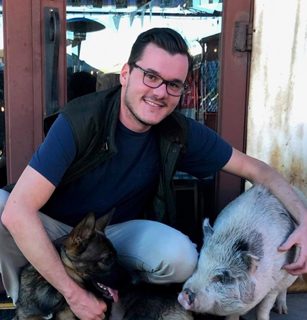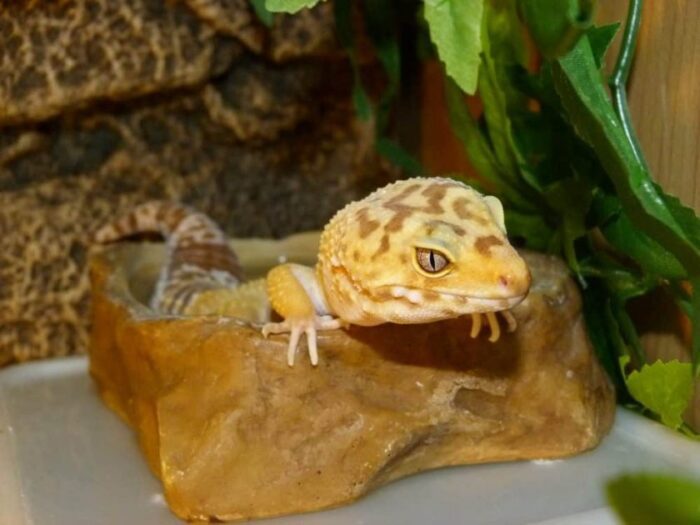Leopard geckos have become incredibly popular pets over the last few decades. Their docile nature, relatively small size, and ease of care make them a great reptile for beginners. When looking to buy a leopard gecko, you’ll find quite a variation in pricing from different breeders and pet stores. What accounts for these price differences? In this article we talk about Factors determining the prie of a Leopard gecko.
Table of Contents
Morphs and Markings
One of the biggest contributors to leopard gecko pricing is their genetic makeup, which affects their coloration and markings. There are over 100 different morphs and color variations of leopard geckos available today. The most common morph is the normal or wild-type. These have yellow and white banding and spots. As their name suggests, this morph resembles what you would find in nature. Normal leopard geckos are generally the least expensive morph.
Rarer color morphs like albinos, which lack black pigment, or eclipse geckos, which lack yellow pigments, can cost over $100 as babies. Certain color and pattern combinations like bold stripes, red eyes, or bright yellow can also drive up prices. The rarer or more visually striking the colors and patterns, the more expensive the morph typically is. This is simply the laws of supply and demand at work. Unique designer morphs can even sell for $500 to $1000 or more.
Breeding Potential
If a leopard gecko morph is especially unique or desirable for creating new color and pattern combinations through breeding, this can greatly increase their price. Breeders are often willing to pay higher prices for geckos that expand their breeding stock. For example, a rare recessive trait male could be bred with females to produce more of that trait. Certain colors, traits and pedigree lines are highly sought after by breeders and exotic pet enthusiasts. These traits get bred into new designer morphs that can sell for steep prices.
Age & Size
Younger and smaller leopard geckos are generally cheaper than mature, full grown adults. Baby leopard geckos usually sell for around $30 to $60 in pet stores. The price goes up for juveniles and subadults. Full grown mature geckos over 6 months old often sell for $80 to $150.
Part of this price difference is that babies have higher husbandry demands. They need to be housed alone, fed more frequently, and require extra care. An adult leopard gecko is over most of the delicate growing phase. Adults are also better established, more accustomed to captivity and handling. Additionally, adults allow buyers to purchase a gecko they can immediately confirm is healthy. These factors make mature geckos more desirable.
Gender
Gender can also impact price. Female leopard geckos are often a bit more expensive than males. This is because females can produce eggs, allowing owners to breed and sell offspring. However, breeding should not be attempted without extensive research and preparation. So the breeding capability only adds value for certain keepers.
Health & Genetics
A leopard gecko’s health is critical to their price. Sickly geckos should not be sold or bought. Any signs of illness, infection, parasites or poor body condition will lower their price significantly. Responsible breeders and stores quarantine and vet geckos before selling them to ensure health.
The genetic background of the parents can also sway pricing quite a bit. Geckos from prize winning bloodlines with exceptional coloration, patterns or breeding results can increase value. Documentation confirming genetic history adds credibility for buyers. Unknown or questionable genetic history lowers price.
Temperament
Leopard geckos are usually quite docile and easy to handle. But an exceptionally calm, friendly gecko with an engaging personality can fetch a higher price. Easy handling helps sell geckos to prospective owners. Geckos that are anxious, defensive or nippy should be priced lower accordingly.
Source/Breeder Reputation
Where the leopard gecko comes from plays a key role in determining fair market price. Major breeders and dealers with lengthy experience and outstanding reputations can justify charging premium rates for their geckos. These sellers often focus intensely on breeding quality specimens and stand behind the geckos they produce. Big name pet stores also mark up prices quite a bit compared to small independent breeders.
On the other hand, average hobbyist breeders typically price geckos more modestly. Their facilities tend to be smaller and their overhead lower, allowing room to undercut commercial breeders on pricing if needed while still turning some profit. However, these breeders often lack the same level of expertise, breeding talent and facilities.
Documentation & Licensing
Proper record keeping is extremely important for responsible leopard gecko breeding and sales. Signed certificates of origin and health guarantees, invoices and care sheets increase buyer confidence. This documentation shows commitment to quality care and management. Sellers who cut corners and lack proper paperwork often struggle to justify premium pricing.
Additionally, commercial breeders with USDA licensing and inspection compliance can sell geckos sight unseen across state lines. Licensing adds overhead expenses that trickle down to pricing but offers buyers more flexibility and convenience. Unlicensed sellers can only sell within their own state without permits.
Conclusion
Pricing for pet leopard geckos varies substantially based on many intersecting factors. Their genetic makeup and rare color morphs can multiply their price tenfold over common varieties. Age, size, breeding potential, temperament and more all sway pricing up or down as well. Where and how the gecko was bred also contributes. Reputable breeders with proper licensing and paperwork can justify much higher pricing than casual hobbyists. While leopard geckos make outstanding pets at any price point, understanding what accounts for pricing differences allows buyers to make educated purchasing decisions. I sincerely hope you find this “Factors determining the prie of a Leopard gecko” article helpful.

Dr. Liam Anderson is a herpetologist with over 10 years of experience in reptile care. Holding a PhD in Herpetology from the University of Florida, he is dedicated to the health and well-being of leopard geckos. As the lead writer for LeopardGeckos101.net, Dr. Anderson provides expert care guides and health tips, ensuring the site’s authority and trustworthiness. Connect with him on Instagram at @leopard_geckos_101.

